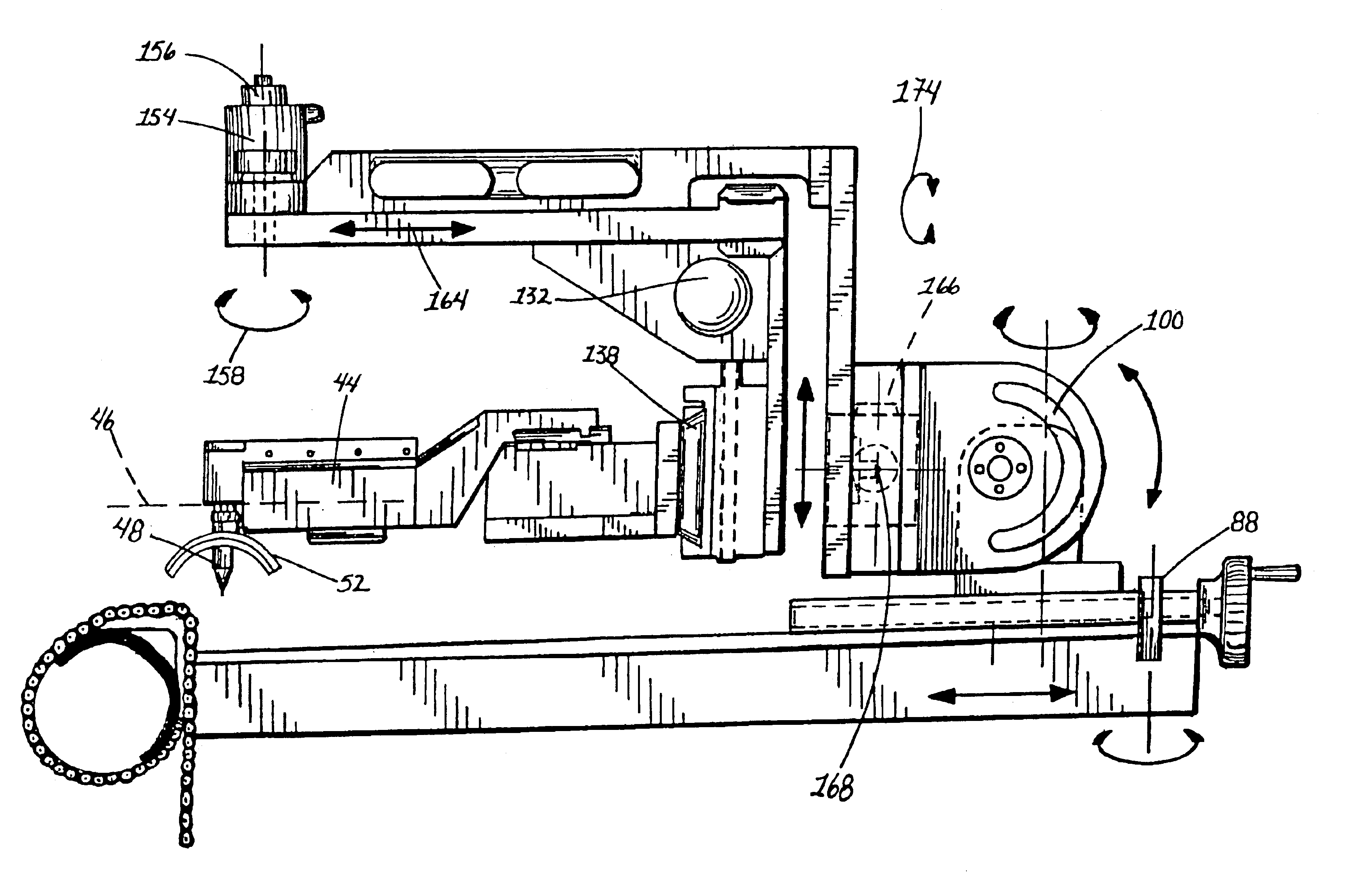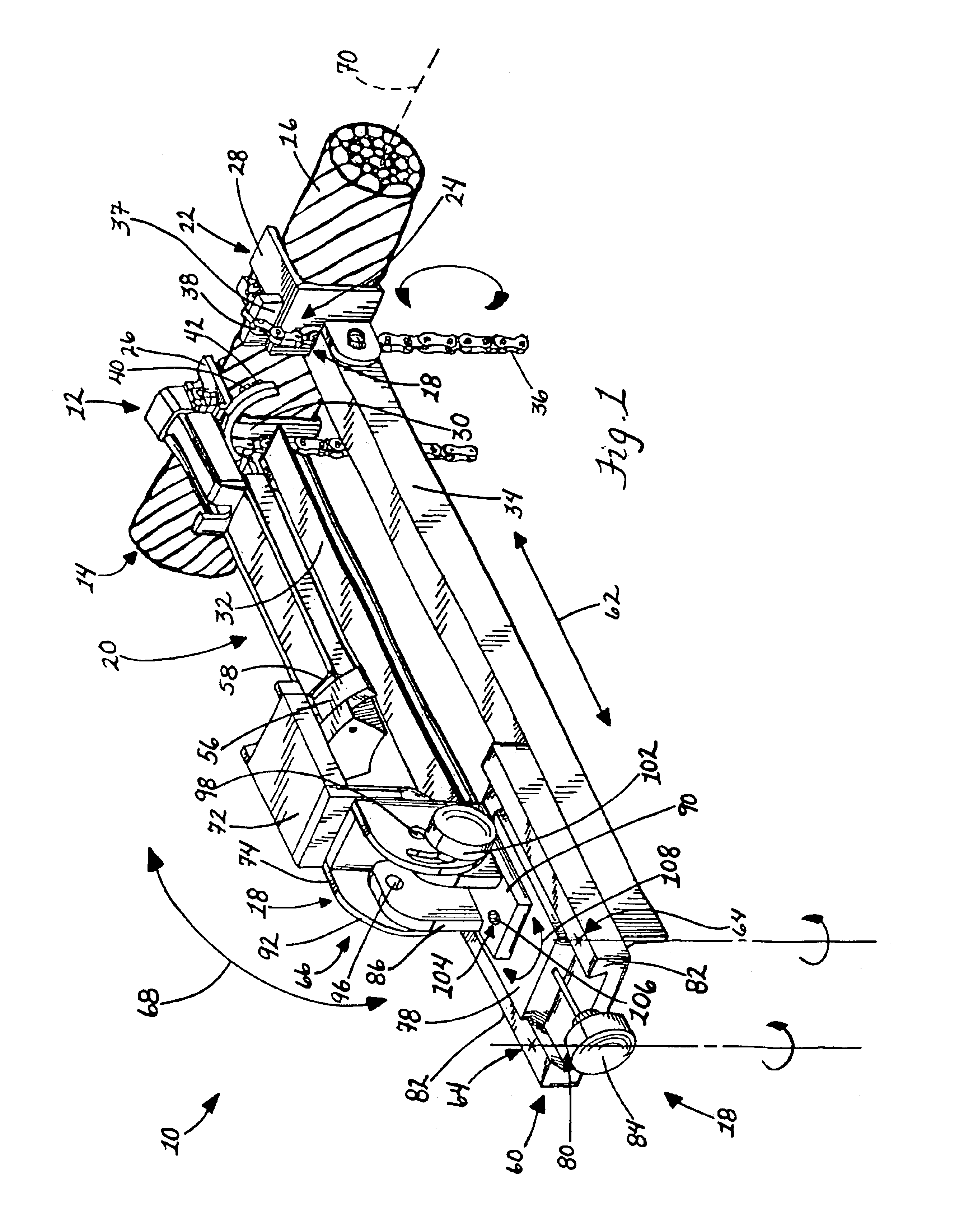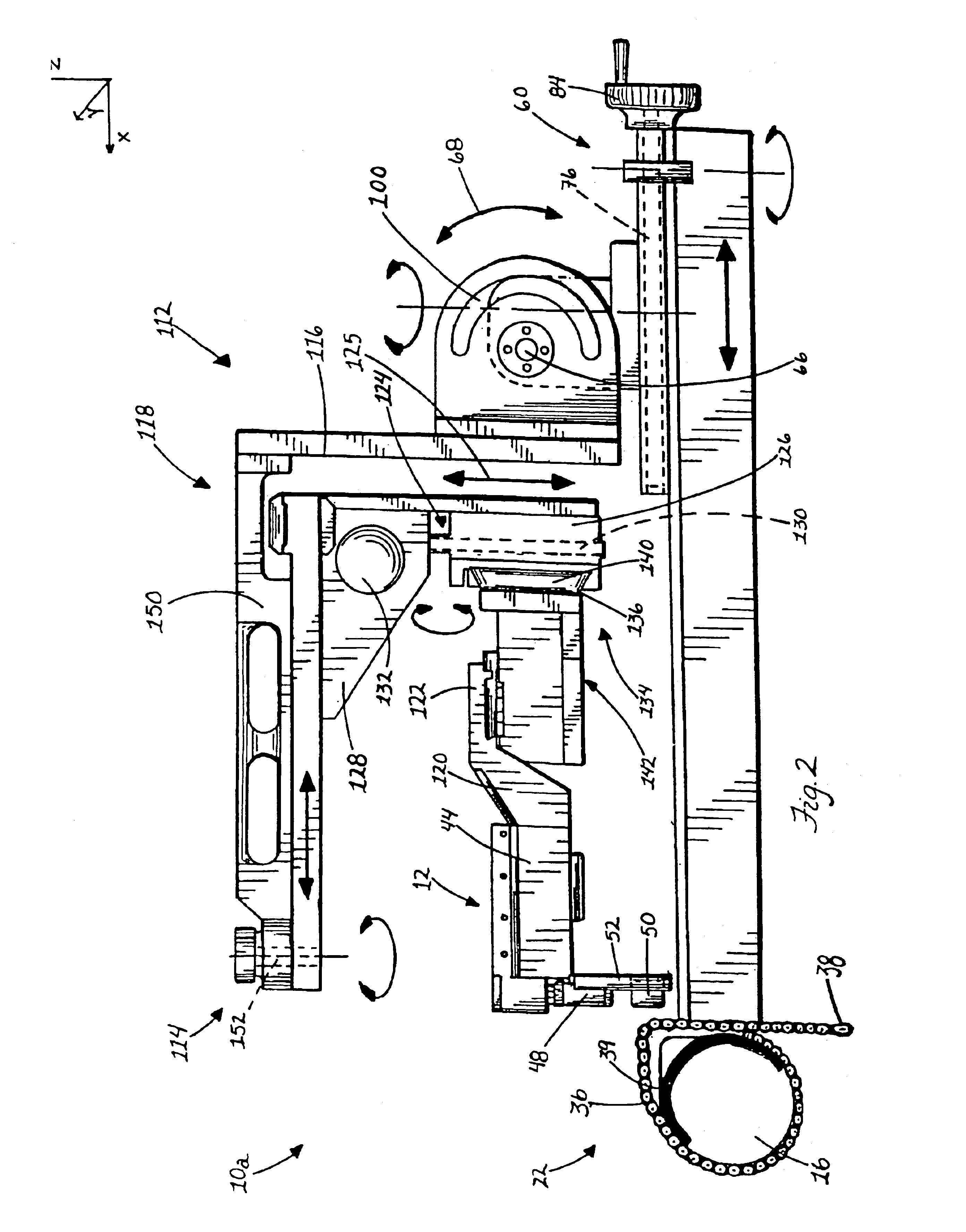X-ray diffraction apparatus and method
a technology of x-ray diffraction and x-ray diffraction, which is applied in the direction of material analysis using radiation diffraction, instruments, measurement devices, etc., can solve the problems of reducing the useful life of parts, creating undue downtime, and requiring a lot of labor for removal and replacement of parts, and determining the remaining useful life of parts before they need to be retired
- Summary
- Abstract
- Description
- Claims
- Application Information
AI Technical Summary
Benefits of technology
Problems solved by technology
Method used
Image
Examples
Embodiment Construction
In FIG. 1, an x-ray diffraction apparatus 10 in accordance with the present invention is shown. The apparatus 10 includes an x-ray head 12 from which x-rays are directed at a part 14, such as the illustrated bridge tension member 16. The main advantage provided by the present apparatus 10 is in the ability of the x-ray head 12 to be moved in a plurality of different directions relative to the part via various adjustment mounts, generally designated 18, that are provided on frame structure 20 supporting the x-ray head 12 for its movements. In this regard, the adjustment mounts 18 afford the head 12 a range of movement so that the head 12 can direct x-rays at the part from different positions thereof and at corresponding different positions on the part 14. As discussed, this is particularly helpful where the part 14 is in service and subject to various use and environmental conditions that can cause highly specific and localized variations in the strength-related characteristic being ...
PUM
 Login to View More
Login to View More Abstract
Description
Claims
Application Information
 Login to View More
Login to View More - R&D
- Intellectual Property
- Life Sciences
- Materials
- Tech Scout
- Unparalleled Data Quality
- Higher Quality Content
- 60% Fewer Hallucinations
Browse by: Latest US Patents, China's latest patents, Technical Efficacy Thesaurus, Application Domain, Technology Topic, Popular Technical Reports.
© 2025 PatSnap. All rights reserved.Legal|Privacy policy|Modern Slavery Act Transparency Statement|Sitemap|About US| Contact US: help@patsnap.com



